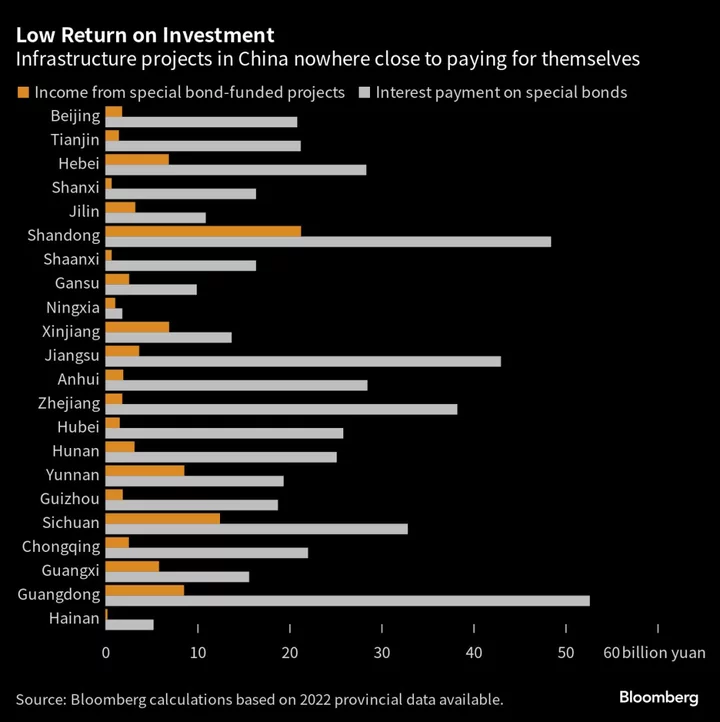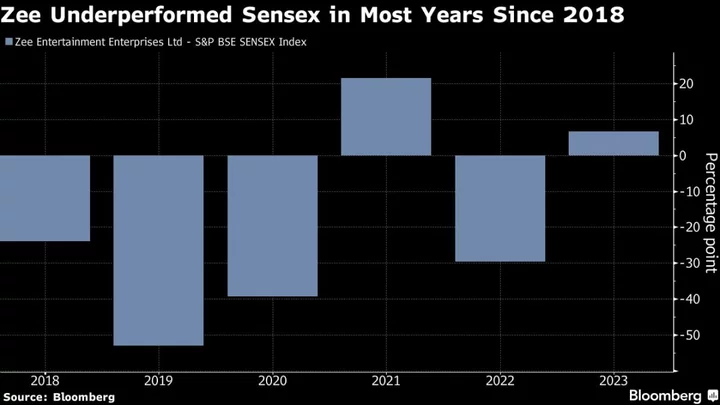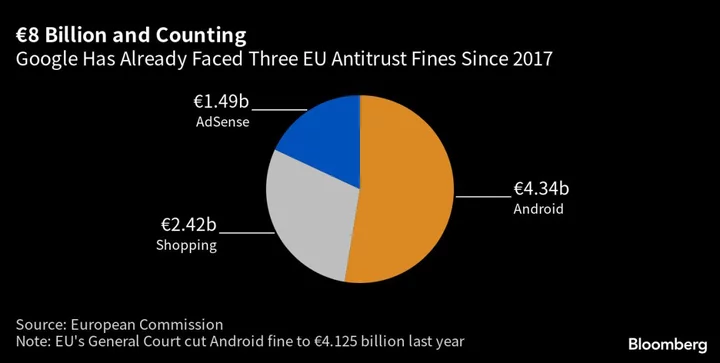China has begun a fresh round of nationwide inspections to work out how much money local governments’ owe, according to people familiar with the matter, a sign that authorities are preparing to take concrete steps to tackle a key financial risk.
Local officials will be pressed to come clean about their so-called hidden debt as national leaders attempt to get a fuller picture of liabilities across all levels of government, the people said, asking not to be named discussing private information. The campaign is being led by the Ministry of Finance, one of the people said.
It’s not clear when the survey will end or what will follow it, but an accurate accounting of the size of the liabilities would be key to formulating policies to address the problem. The assessment has been underway at least since May, one of the people said. The people asked not to be identified as the discussions were private.
The finance ministry didn’t respond to a fax requesting comment.
There are more than 3,000 individual administrative units in China, with 31 provinces, 333 cities and almost 3,000 counties. Many of them use companies called ‘local government financing vehicles’ to borrow money to pay for infrastructure and other services that can’t be paid for from their official budgets. The companies are controlled by the local authorities but are not officially part of the government so their debts don’t appear on official balance sheets, making local finances appear to be in better shape than they really are.
The central government officially denies that government is responsible for these debts, but investors and banks lend to the LGFVs at low interest rates because it is assumed that local authorities will not let any of them fail but will eventually repay their debts.
However, many of the investments made by the LGFVs have struggled to make a profit or even enough money to repay their loans, and investors increasingly see the whole sectors as a financial risk. LGFVs were the most frequently cited top risk in a Bloomberg survey earlier this year of 53 economists, money managers and strategists at financial institutions ranging from sovereign wealth funds to banks and pensions.
Official Debts
Ministry of Finance data showed governments across China had 37 trillion yuan ($5.1 trillion) in on-book debt outstanding at the end of April, but there is no official total for how much hidden debt there is and who owes it.
The International Monetary Fund estimated in February that nationwide there was 66 trillion yuan of LGFV hidden debt at the end of 2022, up from 40 trillion yuan in 2019, with that quick increase underscoring how local governments ramped up off-book borrowing and spending during the pandemic to support their local economies.
China has already conducted several audits of local debt over the past decade. After a 2013 audit, Beijing banned local authorities from borrowing except through the sale of official bonds, and then in 2015 launched a campaign to swap local governments’ off-balance-sheet debt for bonds.
The Ministry of Finance more recently allowed some regions to issue bonds to repay LGFV borrowings in an attempt to eliminate the remaining hidden debt, after another round of checks in 2018. Guangdong province became the first to claim it had successfully done so in 2021. Other LGFVs have been allowed to renegotiate their loans, including one in Guizhou province agreeing with its banks in December last year to extend its loans for two decades.
This new audit of local government debt risks comes just as China’s economic recovery is losing momentum. The real estate sector shows no sign of rebounding, global demand for Chinese goods and domestic consumption are both weakening, and local authorities’ ability to spur growth with infrastructure spending has been limited by their massive debt stockpile and falling income.
Expectations for more monetary and fiscal stimulus have risen following the surprise rate cut last week by the People’s Bank of China. The State Council, China’s cabinet, said late last week it was discussing stimulus proposals, and a major policy announcement is expected to come after the July meeting of the Communist Party’s powerful Politburo.
Morgan Stanley analysts expects China to roll out rate cuts, widen the fiscal deficit by expanding government bond quotas, announce more infrastructure investment, provide tax incentives to support high-end manufacturing and ease home purchase restrictions. The government announced Wednesday that it would extend tax breaks for people to buy electric cars through 2027, in an effort to boost both demand and industrial output.
However, more and more domestic economists are urging Beijing to shift the focus of fiscal stimulus toward boosting household income, as the return on investment of infrastructure projects has declined, leaving local authorities struggling to repay the debt taken on to fund the constructions.









